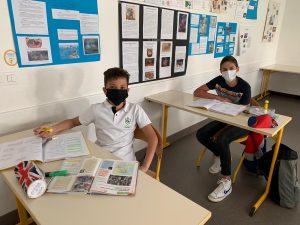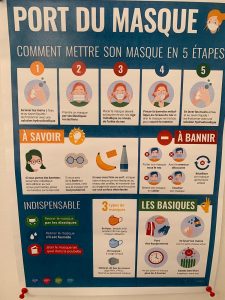Jun
04

Posted by Susan Halpin on June 4th, 2020
Posted in: Blog
Tags: back to school COVID19, education in France, k-12 education
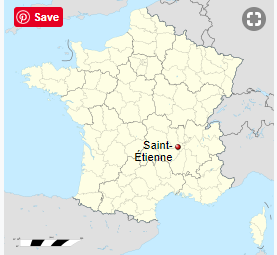
Before joining the NNLM NER, I was a public high school teacher at Algonquin Regional High School in Northborough, Massachusetts. Ten years ago, I said yes to the French teacher in our school looking for a volunteer to host 2 French teachers (who teach English) for 2 weeks as my high school participated in an exchange experience with a school in France. The French students participating in the exchange stayed with the families of students enrolled in Algonquin’s French program. Through involvement with the exchange program I came to know and become good friends with Jeanne-Marie Bacher, vice principal and English teacher from Institution Saint-Paul Saint-Etienne (https://www.institutionsaintpaul.org/)
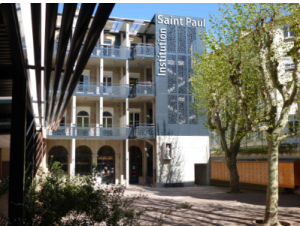
St. Paul’s is home to 1300 students ages 5 through 18. The school is located in the heart of the city of St. Etienne. St. Etienne is 34 miles southwest of the city of Lyon (the second largest city in France) and has a population of 172,023.
It’s been 10 years and 4 more student exchange opportunities have occurred. Even though I now work for the NNLM, my family continues to host our friend every other year as she and one of her colleagues brings 30 of their students to central Massachusetts for the French exchange program.
While other European countries have chosen to keep schools closed, the French government has said that keeping kids in school will prevent them from falling behind. On May 11, the country began opening some primary schools and a group of St. Paul’s staff and faculty returned to their school to prepare for the return of their students.
As the COVID-19 pandemic has unfolded, Whatsapp and Zoom have allowed us to keep in touch with our friends, not only to make sure everyone is healthy, but to also to compare notes about how each of our countries is fairing during these difficult months. As New England starts the process of re-opening, I thought it would be of interest to share what it’s been like for another country to navigate the process of re-opening their schools. On Friday morning, May 22 (for me it was morning, St. Etienne is 6 hours ahead of us in the eastern time zone) we talked through Zoom. It was a treat to see not only Jeanne-Marie who is the vice principal, but also Cyril, the high school government teacher, Philipe, who teaches high school history and Sandra, the principal’s assistant.
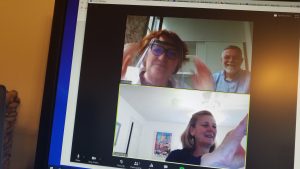
The following is some background information to put the experiences I will share into context. From March 14 through May 11 France was in lockdown with all schools and non-essential businesses closed. Each week during that time the country’s interministerial health committee (Comité interministériel pour la santé) comprised of the country’s ministers (health, economic, education and labor) addressed the country to communicate the most current information about COVID-19 and the impact of this pandemic on their country. This committee was created with the aim of improving population health and reducing health inequalities through better coordination on all matters affecting health determinants, such as socioeconomic, geographic, environmental and educational issues.
During the lockdown there were strict restrictions on travel. “Each day we were allowed 1 hour out of the house to exercise, walk the dog or shop for food. We were asked to write down the time as we left our homes, and we were allowed to travel just 1 kilometer.” FYI, for those of you like me, who have forgotten the metric system, 1 kilometer is .62 miles. Exceptions to the travel rules were made for those taking care of aged family member or those emplyed at an essential job. Citizens were advised to keep official documentation (work certificate papers) allowing travel, either on their person or as a QR code on their phone. Roadblocks were set up around the country, and the fine for not having the documentation if stopped by the police was 135 euros, which is $149.75. Travel restrictions are still in place now even as the country has begun re-open. One hundred kilometers is the maximum distance you can travel as of May 13.
Similar to the US, during the lockdown, the French teachers used Zoom, Skype and other technology to maintain connection with their students. However, lack of internet connectivity and computers prevented some students from participating in the virtual classes, especially those whose families relocated to the countryside during the lockdown,
Monday, May 11 was the first week St. Paul school was open. Faculty and staff who were able, returned and began preparing for their students to return the following week. Classrooms were re-arranged and logistics to aid in efficient movement and less crowding were developed. Creating signage and making corridors one-way by locking doors so passages were either in or out, were put in place as part of the social distancing protocols that were required.
As French schools have begun to reopen, some parents have chosen not to send their children back to school.
“What I have heard quite a bit is that families are afraid of the virus and of becoming infected,” said Marie Lugnier, secretary general of the Rhône department’s parent association. “If they are able to keep their children at home, because there is at least one parent who is not working or has not yet resumed work, they prefer to keep them.”
Many of St. Paul’s students take public transportation to travel to and from school. Because public transportation is a health risk, attendance at school during the re-opening has been just 30% of what it was before COVID-19. St. Pauls has been re-opening in phases. On May 18, just the 7 and 8 graders returned, with 61 of the 180 students in attendance. This past week the 9 and 10 graders started back and 71 of the 172 students returned.
It has been necessary split the school day into a morning session 9AM-Noon for half of the students, and an afternoon session from 2PM-5PM for the rest of the students. Typically, the school day begins at 8AM, there is a long lunch period from noon to 2PM as many of the students living close by either walk or take public transportation home to eat their lunch. Before OVID-19 students would return from lunch at 2PM and the school day ended at 5PM. Because St. Paul’s building is in the middle of the city it has a smaller footprint than schools in the US that house a 1300 student population. The typical class size before the pandemic was about 30 students. To accommodate the new protocol requiring 4 square meters (1 meter equals about 3.3 feet) distance between desks in the classroom 15 students are allowed in each classroom. Additionally, everyone must wear a paper mask provided the educational ministry. The masks are disposed of after each morning or afternoon session, teachers use 2 masks every day. Each morning and before the afternoon session all surfaces in the classroom are wiped down and disinfected by the custodians. The cost for masks, hand sanitizer and additional cleaning materials is estimated to be about 10,000 euros. Jeanne-Marie is hoping they will have just a couple of months of spending this amount of money to keep their school protected from the virus.
Jeanne-Marie and the others are quick to say that the return back to school does not resemble what teaching in their school used to be. Because just 30 percent of their students are attending school right now, classes consist of mostly of listening and talking with the students. Their teaching goal is not introducing new concepts, it is to make sure the students are OK emotionally and mentally, as well as being physically healthy.
The last day of school is July 4. The start for new school year in the fall was is scheduled for Sept 1st. Each day, long memos from the educational minister and school educational board provide more information, however, they have not been told what coming back to school in the fall will look like. Right now, their best guess is that it will be a combination of remote and in school teaching.
